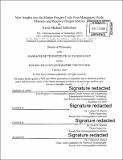| dc.contributor.advisor | Colleen M. Hansel and Scott D. Wankel. | en_US |
| dc.contributor.author | Sutherland, Kevin Michael. | en_US |
| dc.contributor.other | Joint Program in Oceanography/Applied Ocean Science and Engineering. | en_US |
| dc.contributor.other | Massachusetts Institute of Technology. Department of Earth, Atmospheric, and Planetary Sciences. | en_US |
| dc.contributor.other | Woods Hole Oceanographic Institution. | en_US |
| dc.date.accessioned | 2020-10-18T21:44:36Z | |
| dc.date.available | 2020-10-18T21:44:36Z | |
| dc.date.copyright | 2020 | en_US |
| dc.date.issued | 2020 | en_US |
| dc.identifier.uri | https://hdl.handle.net/1721.1/128077 | |
| dc.description | Thesis: Ph. D., Joint Program in Oceanography/Applied Ocean Science and Engineering (Massachusetts Institute of Technology, Department of Earth, Atmospheric, and Planetary Sciences; and the Woods Hole Oceanographic Institution), 2020 | en_US |
| dc.description | Cataloged from PDF of thesis. | en_US |
| dc.description | Includes bibliographical references. | en_US |
| dc.description.abstract | The redox cycling of oxygen between O₂, water, and intermediate redox states including hydrogen peroxide and superoxide, has profound impact on the availability and distribution of dissolved O₂, the habitability of the marine biosphere, and cellular metabolic and physiological reactions that utilize O₂. The sum total of processes that produce, consume, and exchange atoms with O₂ in the atmosphere, oceans, and subsurface leave their isotopic fingerprints on the abundance of the three stable isotopes of O₂ in the environment. In this thesis, I explore two aspects of the oxygen cycle in the past and present. First, I investigate the ability of manganese (Mn) oxide minerals to capture and retain the oxygen isotopic signature of dissolved O₂ during the oxidation of aqueous Mn(II) to Mn-oxide minerals. | en_US |
| dc.description.abstract | I determine that approximately half of the oxygen atoms in Mn(lII,IV) oxides are directly incorporated from dissolved oxygen, and use isotope labeling techniques to further constrain how the dissolved oxygen isotope signature may be determined from that of Mn oxides. I perform an in-depth characterization of a ferromanganese crust from the central Pacific and, using triple oxygen isotope measurements, demonstrate that Mn oxides in ferromanganese crusts from around the world retain signatures of dissolved oxygen for at least 30 million years. I next turn to a previously unconsidered aspect of the global oxygen cycle: dark, extracellular superoxide production by marine microbes. I measure extracellular superoxide production rates by some of the ocean's most abundant organisms. I use these rates along with previous measurements to estimate that extracellular superoxide production yields a net sink of 5-19% of marine dissolved oxygen. | en_US |
| dc.description.abstract | Ultimately, the degree to which superoxide production is a sink of oxygen lies in the fate of its primary decay product, hydrogen peroxide. I determine the range of oxidative and reductive decay of hydrogen peroxide across a range of environmental conditions in a meromictic pond, thus validating several assumptions from our global estimate. Altogether, this thesis illuminates a path toward investigating the oxygen cycle on million-year timescales in Earth's recent past and demonstrates the importance of microbial superoxide production in the biogeochemical cycling of O₂. | en_US |
| dc.description.statementofresponsibility | by Kevin Michael Sutherland. | en_US |
| dc.format.extent | 234 pages | en_US |
| dc.language.iso | eng | en_US |
| dc.publisher | Massachusetts Institute of Technology | en_US |
| dc.rights | MIT theses may be protected by copyright. Please reuse MIT thesis content according to the MIT Libraries Permissions Policy, which is available through the URL provided. | en_US |
| dc.rights.uri | http://dspace.mit.edu/handle/1721.1/7582 | en_US |
| dc.subject | Joint Program in Oceanography/Applied Ocean Science and Engineering. | en_US |
| dc.subject | Earth, Atmospheric, and Planetary Sciences. | en_US |
| dc.subject | Woods Hole Oceanographic Institution. | en_US |
| dc.title | New insights into the marine oxygen cycle from manganese oxide minerals and reactive oxygen species | en_US |
| dc.type | Thesis | en_US |
| dc.description.degree | Ph. D. | en_US |
| dc.contributor.department | Joint Program in Oceanography/Applied Ocean Science and Engineering | en_US |
| dc.contributor.department | Massachusetts Institute of Technology. Department of Earth, Atmospheric, and Planetary Sciences | en_US |
| dc.contributor.department | Woods Hole Oceanographic Institution | en_US |
| dc.identifier.oclc | 1199217392 | en_US |
| dc.description.collection | Ph.D. Joint Program in Oceanography/Applied Ocean Science and Engineering (Massachusetts Institute of Technology, Department of Earth, Atmospheric, and Planetary Sciences; and the Woods Hole Oceanographic Institution) | en_US |
| dspace.imported | 2020-10-18T21:44:28Z | en_US |
| mit.thesis.degree | Doctoral | en_US |
| mit.thesis.department | EAPS | en_US |
